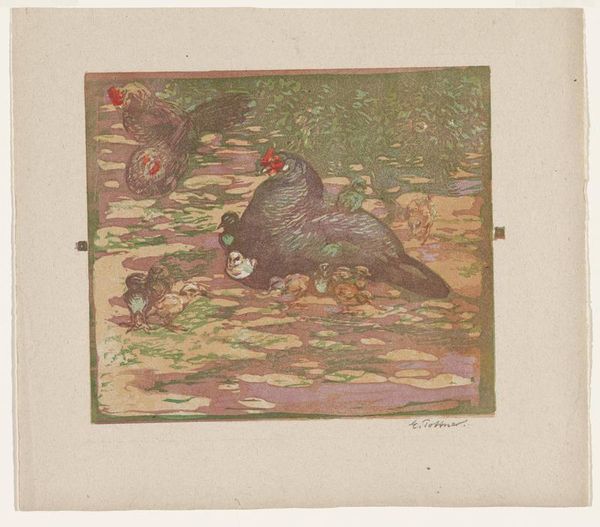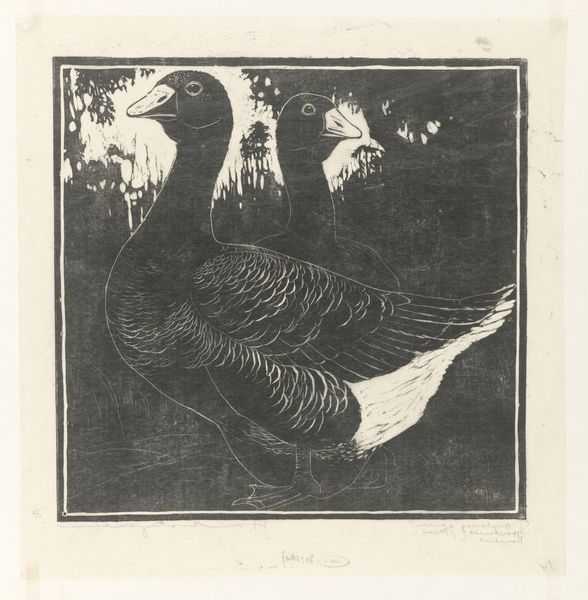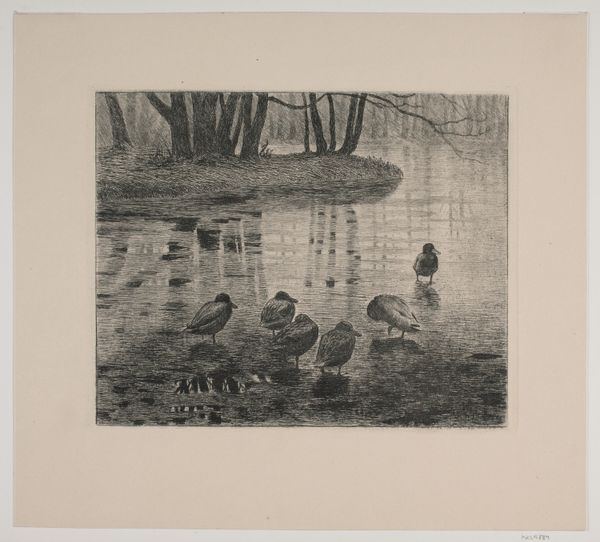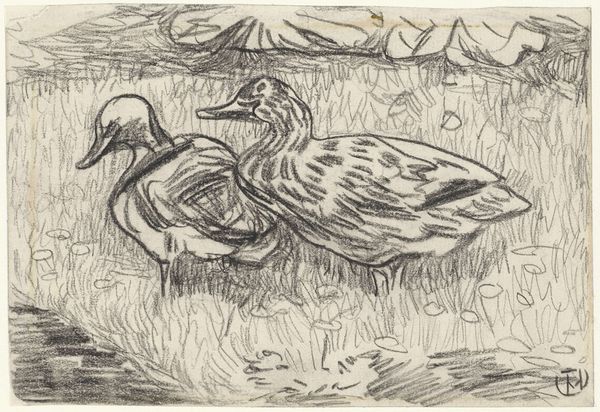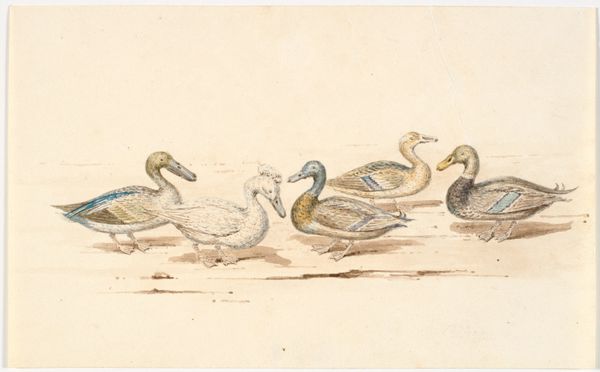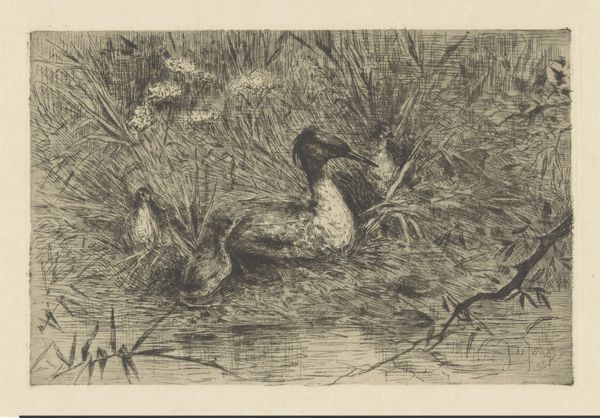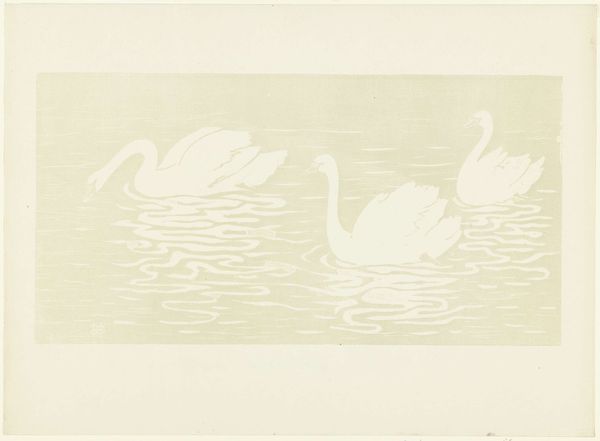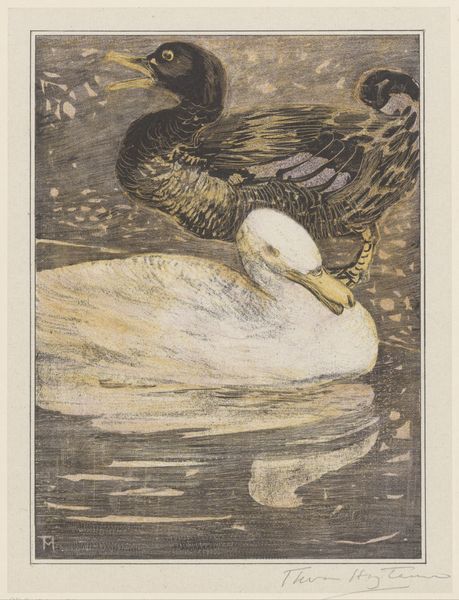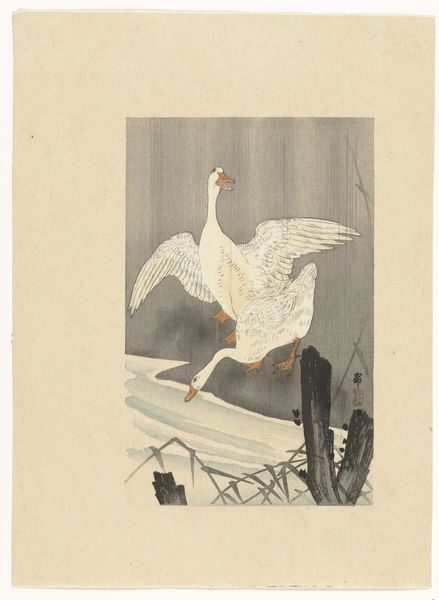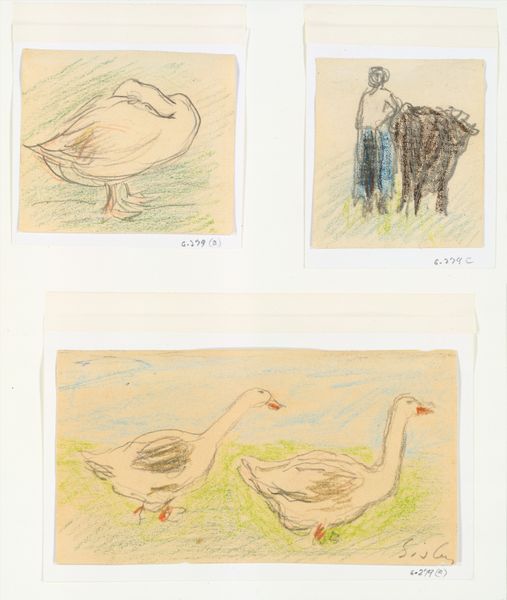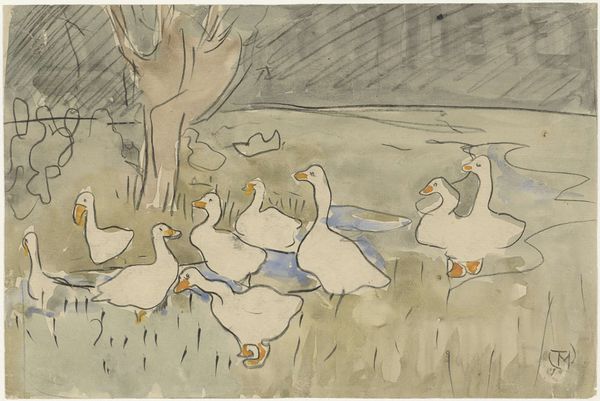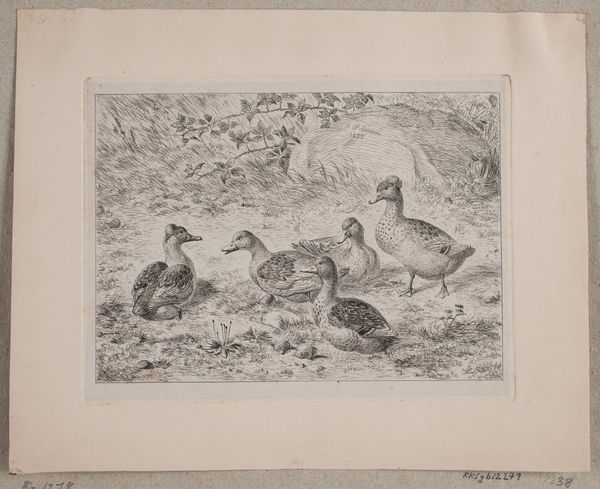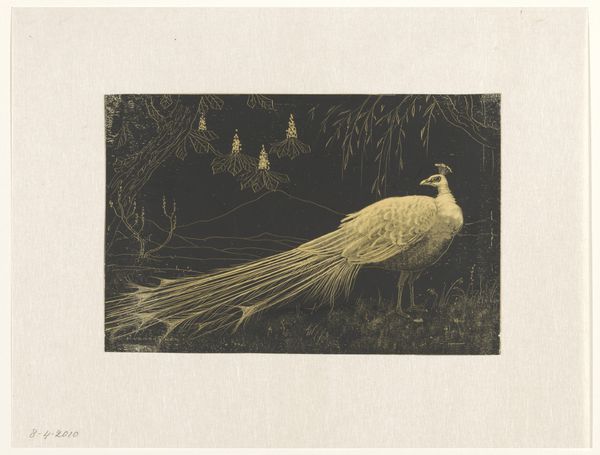
Dimensions: 8 1/4 × 9 in. (20.96 × 22.86 cm) (image)11 1/8 × 10 7/16 in. (28.26 × 26.51 cm) (sheet)
Copyright: No Copyright - United States
Curator: Welcome! We’re standing before “Waterfowl and Chickens (Wasservögel und Hühner),” a watercolor print created circa 1920 by the German artist Emil Pottner. Editor: It has an appealing rustic quality, almost like something out of a children's book. The colors are muted, primarily earth tones, which gives it a feeling of nostalgia. Curator: Indeed. Pottner was active during a period of significant social and political upheaval in Germany. Art increasingly mirrored these concerns and the growing unease felt across society. Editor: The way the animals are clustered together certainly gives me pause. It speaks to a need for survival, almost as though they're seeking protection amidst an unseen threat. Are they metaphors? Curator: Possibly. Though he embraces a more conventional landscape, his Impressionistic style evokes that moment. Notice how the quick strokes and washes of watercolor capture fleeting impressions of light on the water. Editor: Look closely. I notice the stark contrast between the ducks and chickens—domesticated creatures living together yet remaining distinctly separate. A possible commentary on societal divisions maybe? Curator: Art historians have considered Germany’s return to folk and rural imagery post-WWI. Many believe it was part of an attempt to promote unity and identity after great social turmoil. Editor: Yes, there is certainly something about returning to idealized roots for safety. Yet, while this appears bucolic at first glance, beneath that lies a disquiet that, for me, speaks to the very human themes of community, exclusion, and our longing for peace. Curator: That's a keen observation. Pottner’s choice of depicting humble farm animals, within this time of national anxiety and social reformation, makes the artwork both an aesthetic object and a historical document. Editor: "Waterfowl and Chickens" invites us to reflect on our relationship with the natural world and also each other—highlighting enduring themes that resonate even today. Curator: Precisely. Thank you for that engaging perspective! I think visitors will carry that new understanding of this work forward.
Comments
minneapolisinstituteofart almost 2 years ago
⋮
Emil Pottner broke a few rules with this print. He shifted his color blocks so that they were slightly out of register, even though he had little squares in the margin to aid in proper alignment. The shift resulted in a lively sense of movement, a nonstop peeping, pecking, and waddling. Birds were a lifelong subject for Pottner, and he saw all kinds outside his door in Petzow, Germany, a spot along the Havel River near Berlin. In 1938 the Nazis forced Pottner, who was Jewish, from his home. He died after being deported to the Treblinka death camp in 1942.
Join the conversation
Join millions of artists and users on Artera today and experience the ultimate creative platform.
